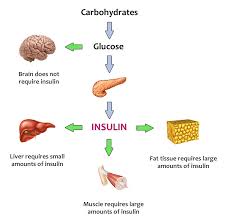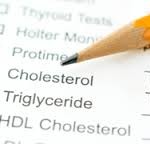 Lipids are a class of organic compounds that are fatty acids. They are insoluble in water but they do dissolve in other organic solvents. Lipids include waxes, oils and steroids. Our body uses these lipids, or fats, to play some very important roles. Fat supply energy to our cells, help digestion and absorption of nutrients, produce hormones and help to fully develop the brain in young children.
Lipids are a class of organic compounds that are fatty acids. They are insoluble in water but they do dissolve in other organic solvents. Lipids include waxes, oils and steroids. Our body uses these lipids, or fats, to play some very important roles. Fat supply energy to our cells, help digestion and absorption of nutrients, produce hormones and help to fully develop the brain in young children.
However, too much of a good thing can just be too much. Because fat is a dense energy source it is used to store energy. This stored fat is also used to insulate the body to keep your core temperature steady and protect some of the internal organs from injury. But too much fat storage and you are just fat. Like all things, there is a middle ground of just enough fat for energy and insulation. Too little and your body doesn’t function optimally and too much and you increase your risk of disease.
There is a significant relationship between the production of insulin in the body in response to blood glucose and the production of lipids. These blood lipids are measured as cholesterol and triglycerides.
In response to eating any type of carbohydrate your body’s blood glucose will rise. This triggers the release of insulin in your body to transport the sugar across cell membranes and provide energy for your cells. Sounds like a good idea, doesn’t it?
However, when you fill up on carbs and sugar your body uses carbs for fuel and not the stored fat you have. When you have more than you immediately need the body will store the blood sugar in the liver. When the liver is full the blood glucose become triglycerides for energy storage.
Using insulin to transport the glucose across the cell walls prevents your body from using fat for energy and will in fact encourage the body to lay down more fat. The more sugar and carbs you eat the more resistant to insulin your body becomes over time.
You can increase the body’s sensitivity to insulin again, decreasing the amount of circulating insulin and therefore improve the ability of the body to burn fat for fuel. One way is to use omega-3 oils to improve circulation and the second is to use resistance training to improve muscle development and increase circulation to those working muscles. Working the muscle helps the body to use the blood sugar and reduce the amount of circulating insulin.
Because increased amounts of insulin can increase the production of lipids you may want to consider a diet higher in monounsaturated fats (MUFAs). In a study published in the American Journal of Clinical Nutrition, researchers found that healthy adults who had a diet higher in almonds (monounsaturated fat) reduced their serum lipids.
References:
(1) The American Journal of Clinical Nutrition: Effect of diets enriched in almonds on insulin action and serum lipids in adults with normal glucose tolerance or type 2 diabetes
http://ajcn.nutrition.org/content/76/5/1000.full
Resources:
SFGate: What are lipids used for in the body
http://healthyeating.sfgate.com/lipids-used-body-8282.html
Mercola: Insulin and its metabolic effects
http://articles.mercola.com/sites/articles/archive/2001/07/14/insulin-part-one.aspx
American heart association: Arteriosclerosis, thrombosis and vascular biology
http://atvb.ahajournals.org/content/10/3/430.full.pdf
American Heart Association: relation of fasting insulin to blood pressure and lipids in adolescents and parents
https://hyper.ahajournals.org/content/30/6/1554.full
American Diabetes Association: Cinnamon Improves Glucose and Lipids of people with type 2 diabetes
http://care.diabetesjournals.org/content/26/12/3215.long
Arteriosclerosis: Association of fasting insulin with blood pressure and lipids in young adults
http://www.ncbi.nlm.nih.gov/pubmed/2188641
Journal of Pediatrics: Relationship between insulin resistance and abnormal lipid profile in obese adolescents
http://www.ncbi.nlm.nih.gov/pubmed/7751990
The Lancet: Plasma-Lipids and glucose/insulin relationship in non-insulin-requiring diabetics with and without retinopathy
http://www.thelancet.com/journals/lancet/article/PIIS0140-6736(75)92497-6/abstract
University of New Mexico: Cortisol Connection
http://www.unm.edu/~lkravitz/Article%20folder/stresscortisol.html


Leave a Reply